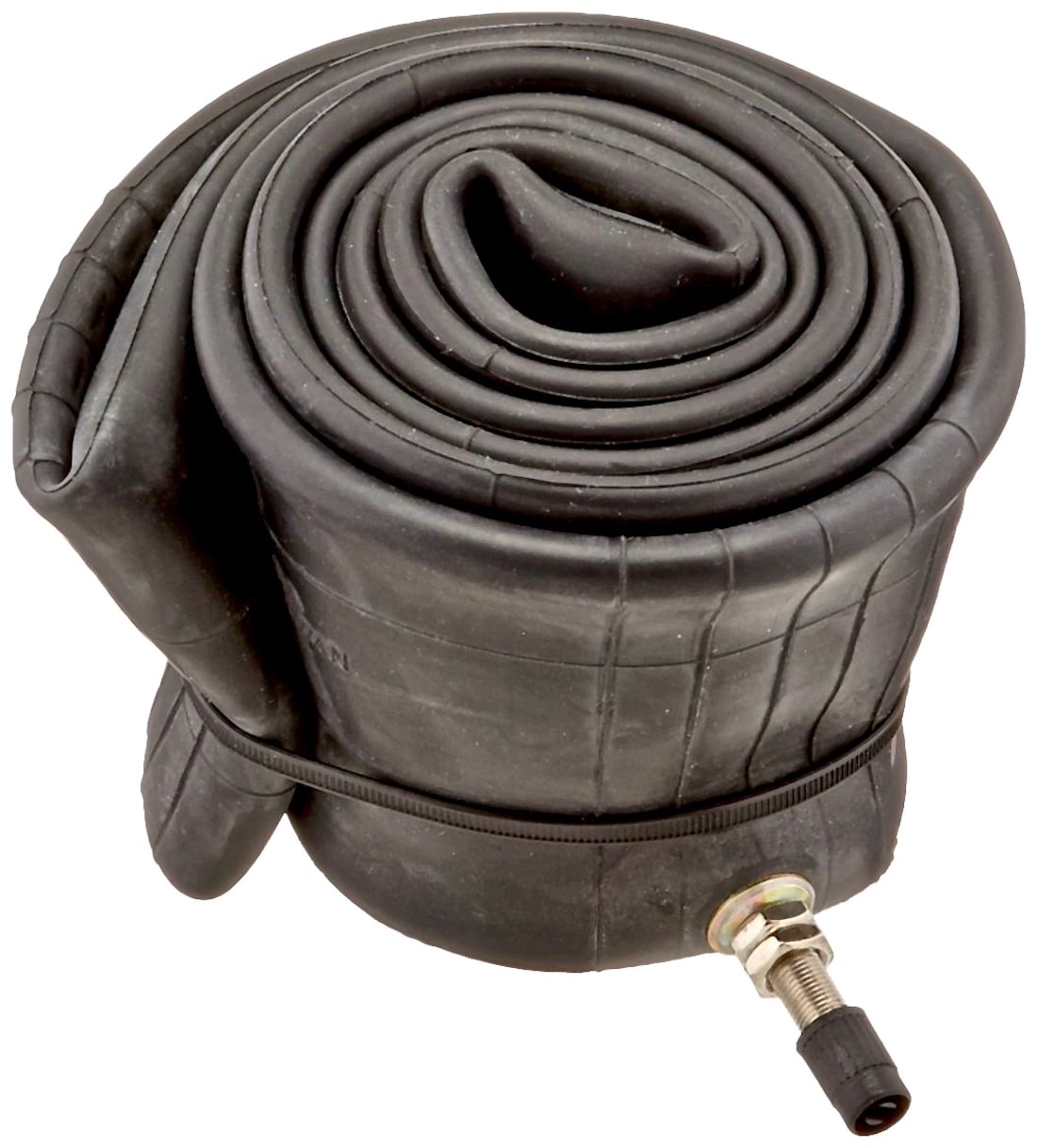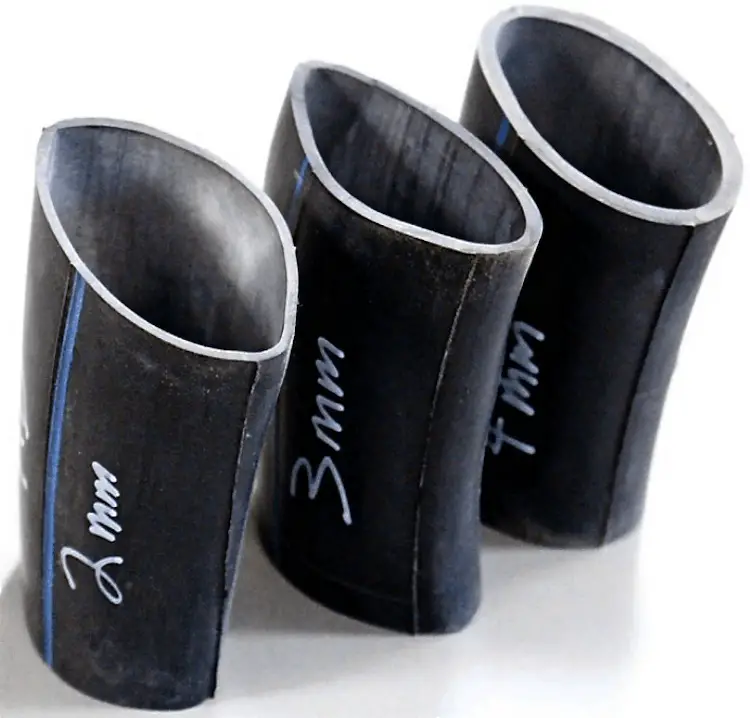TEN THINGS YOU NEED TO KNOW ABOUT INNER TUBES
(1) Synthetics. Inner tubes are a mix of natural and synthetic rubber. Natural rubber is more pliable and offers better resistance to punctures, but synthetic rubber is cheaper. Expensive racing tubes generally have a higher percentage of natural rubber to better form to the tire and to prevent flats. There are also solid foam inserts (called mousse tubes) that simulate air pressure from a foam tube.
(2) Thin versus thick. For a motorcycle manufacturer, the inner tubes are an easy place to save weight and money. Most bikes come stock with thinner and cheaper tubes. Since the entire mass of an inner tube is rotating mass and unsprung weight, it is a prime place to save weight. Conversely, almost every factory racer runs heavy-duty tubes (or mousses) to prevent flats.
(3) Sizing. Having the proper size inner tube for the tire is important for performance and preventing pinches. If you install a 110 inner tube in a 100 tire, the excess rubber will render it susceptible to being pinched with the tire irons. An inner tube that is too small for a given tire will have to be overinflated to make up the difference in size. Overinflation weakens the ability of the inner tube to resist damage. It is possible to run a smaller tube to save weight, but it isn’t recommended.
(4) Performance. Inner tubes play a large role in the feel and performance of the tire. Inner tubes must be the correct shape and size to sit flush against the sidewall to give a good, consistent feel. If there are places where the inner tube isn’t in contact, the tire will feel mushy.
(5) Heat. Inflating an inner tube to the proper pressure not only ensures more sidewall strength, but also prevents pinch flats. As a rule of thumb, 12 to 14 pounds per square inch (psi) is the standard recommended pressure. Keep in mind that as the tire heats up during operation, internal pressures can increase by as much as four psi. This can be lessened by using nitrogen in the tubes to avoid the water content and heat expansion.
(6) Weight. Inner tubes are available in a variety of thicknesses to provide the appropriate amount of protection against flats. A thin inner tube is approximately 1.5mm to 1.75mm thick. A heavy-duty tube is around 2mm to 3mm thick. And a super-heavy-duty tube is 3.5mm to 5mm thick. The weight of a thin 110-90-19 inner tube is about 1230 grams (2.71 pounds), while a 3.5mm super-heavy-duty 110-90-19 weighs 1720 grams (3.79 pounds). For comparison purposes, a mousse tube tips the scales at 1950 grams (4.29 pounds).
(7) Baby powder. If an inner tube isn’t installed properly, it can fail. Using corn starch or baby powder on the inner tube during installation will reduce friction between the inner tube and the tire’s carcass to help the tube last longer. Adding a little air to shape the inner tube before mounting the tire can help prevent pinches during tire installation.
(8) Valve stem. The valve stem is the weak point of a tube. It is vulnerable to damage and leaks. The valve stem is vulcanized to the tube and can be torn off if the tire spins on the rim, so be sure the rim lock is properly installed. Never tighten the nut on the valve stem down to the rim. If you leave it loose, the tire can spin a little without ripping the valve stem off the tire. You can tell when the tire has spun on the rim because the valve stem will be cocked at an angle. Make sure to re-center the valve stem any time you see it angled.
(9) Contaminants. An inner tube is made to handle the abuse of a tire carcass, but not the outside elements. If water or dirt gets between the tire and tube, it will grate against the inner tube. Be sure that contaminants can’t get in through the rim lock or valve stem holes. The rubber grommet that comes stock on Hondas is a good idea. Replacing the standard rubber rim strip with duct tape makes it more difficult for water to get past the spoke nipples.
(10) Lifespan. Even if your inner tube hasn’t gone flat, it can wear out. Dunlop recommends changing tubes every six months. To know when to replace a tube, look for chaffing, strings of rubber, discoloring (an old tube gets darker) or fading of any writing on the tube. Amazingly, patched tubes will work as well as a new tube, but the patch is a weak point and ideally should only be used in a pinch (pun intended).








Comments are closed.